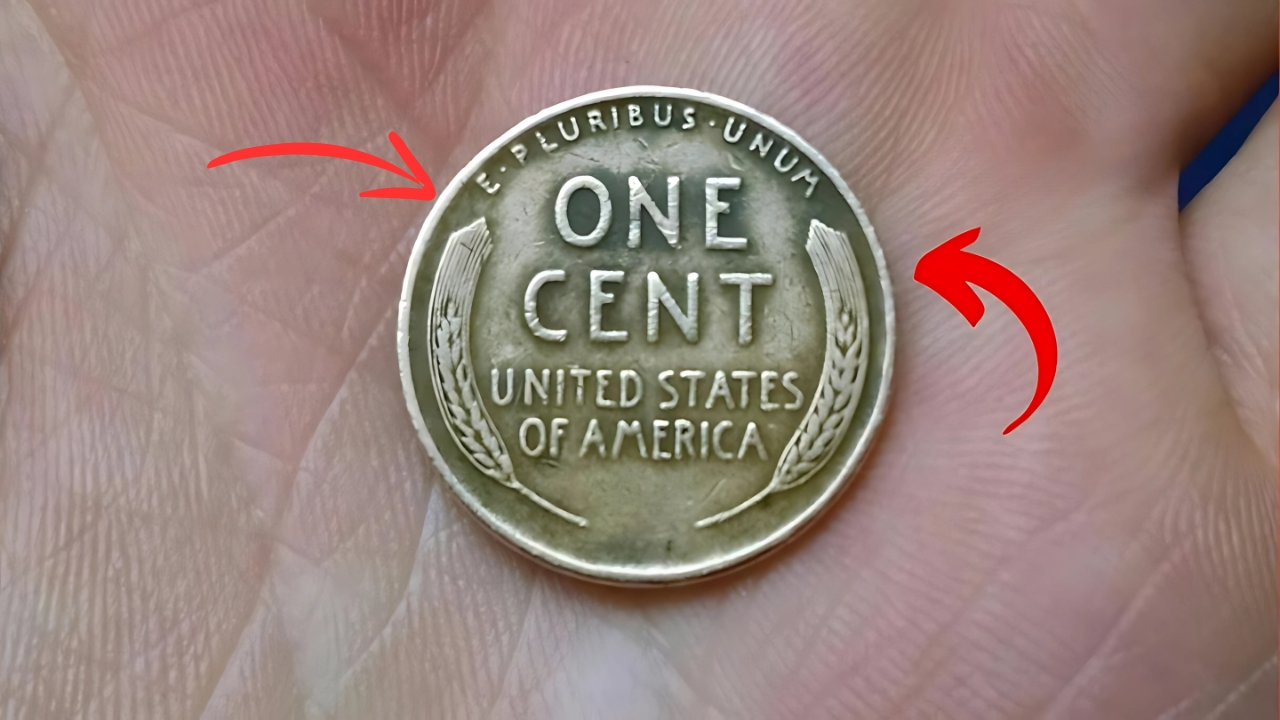Wheat pennies represent a fascinating chapter in American coinage history, with some specimens commanding prices that far exceed their humble one-cent face value.
These coins, minted between 1909 and 1958, hold special significance for collectors and historians alike.
1. 1909-S VDB Lincoln Wheat Penny: The Legendary Rarity
The 1909-S VDB Lincoln Wheat Penny stands as the most famous and sought-after wheat penny in numismatic history.
Featuring the initials of designer Victor David Brenner (VDB) on the reverse, these coins were quickly removed from circulation after a controversy about the prominence of the designer’s initials.
Only 484,000 were minted in San Francisco, making them extremely rare. Top-condition specimens can sell for $50,000 to $100,000, with the most exceptional examples reaching even higher prices.
Collectors prize this coin not just for its rarity, but for its historical significance in the early days of the Lincoln cent series.
2. 1914-D Lincoln Wheat Penny: The Denver Mint Treasure
The 1914-D Lincoln Wheat Penny is another highly prized coin among collectors. With a low mintage of just 1,193,000 at the Denver Mint, this penny represents one of the rarest key dates in the wheat penny series.
In top condition, these pennies can command prices between $5,000 and $25,000. The most exceptional specimens have sold for over $40,000 at specialized numismatic auctions.
What makes this coin particularly valuable is its combination of low mintage and historical significance during a pivotal time in American history.
3. 1922 No D Lincoln Wheat Penny: The Mint Error Phenomenon
The 1922 No D Lincoln Wheat Penny is a fascinating error coin from the Denver Mint. Due to a damaged die, some pennies were struck without the characteristic “D” mint mark, creating an incredibly rare variety.
Depending on condition, these pennies can sell for $20,000 to $50,000. The most exceptional specimens have fetched even higher prices at specialized auctions. Collectors are fascinated by this error, which represents a unique moment in the minting process.
4. 1931-S Lincoln Wheat Penny: The Great Depression Rarity
The 1931-S Lincoln Wheat Penny emerged during the depths of the Great Depression, with an extremely low mintage of just 866,000 coins. This economic hardship resulted in one of the rarest wheat pennies in the series.
Top-condition specimens can sell for $10,000 to $25,000, with the finest examples reaching even higher prices.
Collectors value this coin not just for its rarity, but as a tangible reminder of one of the most challenging economic periods in American history.
5. 1955 Double Die Obverse Wheat Penny: A Minting Miracle
The 1955 Double Die Obverse Lincoln Wheat Penny is one of the most famous error coins in American numismatics.
During the minting process, the die was accidentally struck twice with slightly different alignments, creating a dramatic doubling effect on the coin’s design.
These pennies can sell for $25,000 to $100,000 in top condition. The most exceptional specimens have reached even higher prices.
Collectors are captivated by the dramatic doubling visible on the date and lettering, making this one of the most sought-after wheat penny varieties.
Understanding Wheat Penny Valuation: What Makes a Penny Valuable?
Several key factors contribute to a wheat penny’s value:
- Rarity: Extremely low mintage numbers
- Condition: Preservation quality
- Mint Mark: Specific mint locations
- Historical Significance: Unique minting periods or errors
- Unique Characteristics: Minting errors or variations
Collecting Rare Wheat Pennies: Expert Tips
For those interested in wheat penny collecting:
- Authentication is Crucial: Always have rare coins professionally graded
- Understand Grading: Learn about coin grading scales
- Proper Storage: Protect coins from environmental damage
- Research Thoroughly: Study the history of rare wheat pennies
- Consult Experts: Work with reputable coin dealers and collectors
The Preservation of Wheat Pennies
Proper preservation is critical for maintaining a wheat penny’s value:
- Avoid Cleaning: Cleaning can significantly reduce a coin’s value
- Store Properly: Use acid-free holders or protective cases
- Handle Carefully: Always hold coins by their edges
- Control Environment: Keep coins away from moisture and extreme temperatures
Historical Context of Wheat Penny Design
The wheat penny, designed by Victor David Brenner, replaced the Indian Head cent in 1909.
The reverse side featuring two wheat stalks symbolized America’s agricultural prosperity, while the portrait of Abraham Lincoln on the obverse celebrated the president’s centennial birth year.
Investment Potential of Rare Wheat Pennies
While not all wheat pennies are valuable, certain specimens have proven to be exceptional investments. Serious collectors and investors have seen significant returns on rare, well-preserved wheat pennies.
5 Rare Wheat Penny coin worth
These five wheat pennies represent more than just monetary value. They are tangible pieces of American history, each telling a unique story of minting techniques, economic challenges, and technological evolution.
From the earliest days of the Lincoln cent to the economic challenges of the Great Depression, these pennies capture moments in time. They remind us that even the smallest coins can hold extraordinary value – both historical and financial.
Whether you’re a serious collector or a curious enthusiast, the world of rare wheat pennies offers a fascinating journey through American numismatic history. Each coin is a miniature time capsule, preserving stories of innovation, error, and the artistry of coin production.
The legacy of the wheat penny continues to captivate collectors, historians, and investors alike. These small copper discs are more than just currency – they are windows into America’s past, each with a story waiting to be discovered.
